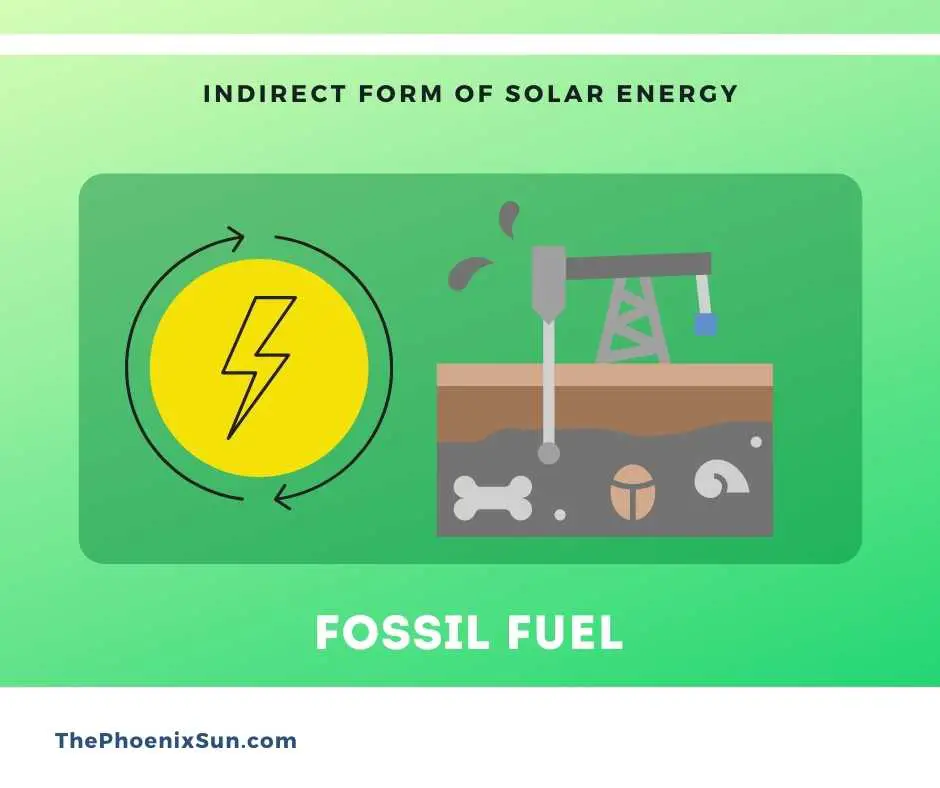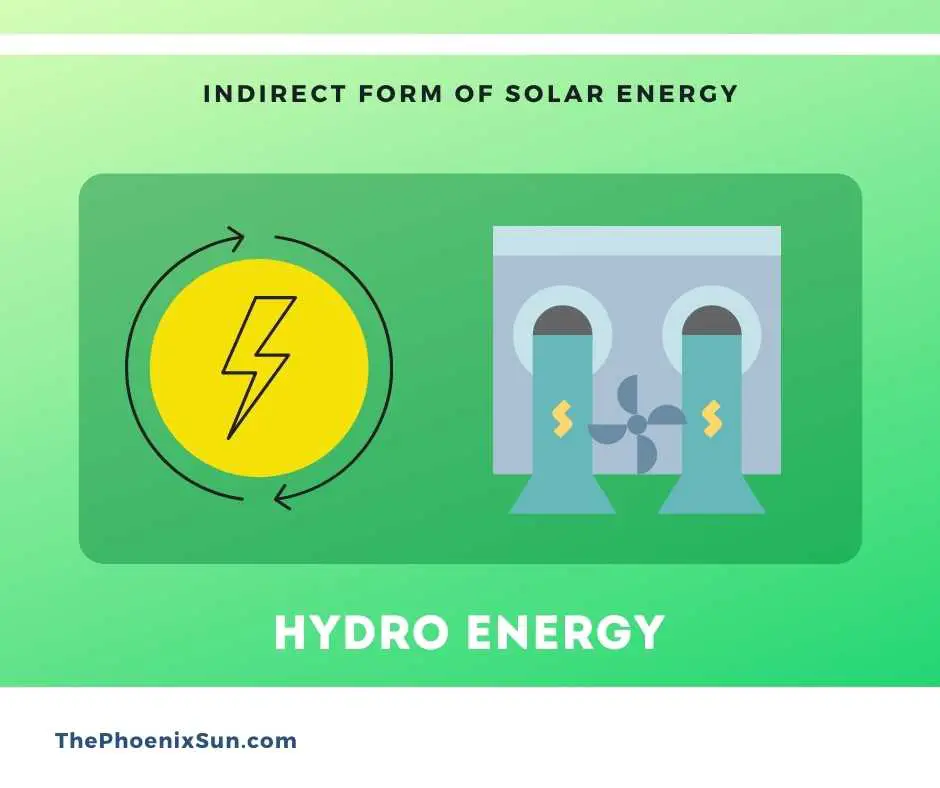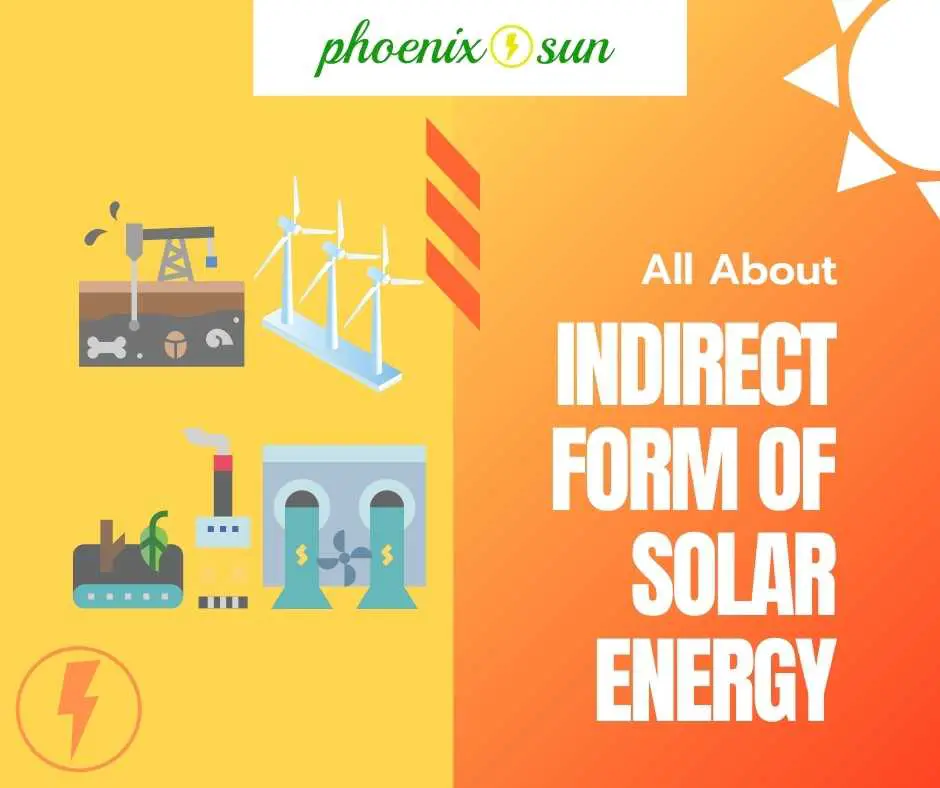All clean and renewable energy sources are speedily getting popularity around the world. An indirect form of solar energy is becoming an alternative solution for energy production and meeting electricity demand.
You will get an eco-friendly energy generation process through these alternative conformations of solar energy.
This writing will help you to understand the direct and indirect forms of energy to power your place.
It will also describe some significant indirect forms of solar energy, such as wind, fossil fuel, biomass, and hydro energy. Let’s perceive the entire fact.
Contents
Direct and Indirect Forms of Energy

The world needs the energy to provide power for all the creation. Energy production is possible from various sources.
Several sources include separate forms of energy. Energy formation strongly depends on the complexion of energy.
We can get electricity directly or indirectly from the sources. The process of getting energy is related to the form of energy.
Similarly, renewable energy sources like solar systems increase the expectation of green power production.
To understand the indirect form of solar energy, you have to concentrate first on indirect and direct energy knowledge. Let’s find that in this writing.
What is Indirect Energy?
To produce electricity, we have to convert energy from one source to another. An indirect conversion involves converting energy from one form, then to an intermediate form, and finally to electricity.
Coal-fired production plants are an example of the indirect process of electricity formation.
In this process, fossil fuel is burned to release heat, then the heat provides power to the steam engine, and then the rotational kinetic energy produces electricity.
Most electric plants produce electricity through the indirect energy conversion process.
Fossil fuel, nuclear energy, gas are the major indirect forms of energy. Electricity production largely depends on these matters.
But the alternative and renewable energy sources are also available and spreading with their increasing usage.
What is Direct Energy?
When the energy source is converted directly to electricity, it is called direct energy. This process uses a direct conversion method from one form to another.
The photovoltaic solar panels are an example of a direct form of energy. In this system, solar panels convert solar radiation directly to electricity.
The sun is a renewable source of energy, and it provides power directly to solar panels.
Besides, the energy form that comes from the solar system is a direct conversion process. It provides heat to the photovoltaic cells to generate electric power.
You will find several indirect forms of this direct energy. For instance, wind, fossil fuel, biomass, and hydro energy are the indirect forms of solar energy.
What is the Difference Between Direct and Indirect Solar Energy?
As we explained in the above sections, there are some differences between direct and indirect energy. It is also true for solar power.
To get direct solar energy, the sunlight from the sun must undergo only one change to convert it into a usable form. Direct solar energy is a kind of energy that can be generated directly from the sun through this process.
The energy from the sun can come directly via various forms. The photovoltaic solar panels receive sunlight and convert it into electricity. It is a process of direct energy conversion.
For this reason, solar panels are installed outside so that they can get the sunlight directly. It is the source of the power of this energy form.
On the contrary, indirect solar power can be found around the world. The power of the universe comes from the sun in several forms.
Indirect solar power goes through several changes and conversions to make it usable. It is the result of the sunlight that focuses on the world naturally.
Every plant or wild around the world contains indirect solar energy. For instance, a plant uses photosynthesis to produce its necessary sustenance. It is a kind of conversion that converts sunlight into chemical energy.
Besides, fossil fuel, coal, and tree limbs are an example of indirect solar energy. The sun’s power helps them to survive and makes them a specific matter.
So, the difference between direct and indirect energy relies on their function and production process, along with sources.
Wind Energy

Wind energy is an indirect form of solar energy. It uses solar radiation to produce wind by heating the air.
The air over the ground is heated rapidly than the air over the water spaces.
Because during the day, the land absorbs much less sunlight and allows less evaporation. The heat reduces the weight of the air and helps to raise.
The cooler water over the water bodies, getting the place of lighter and warmer air, this continuous process allows the rising of air and its movement.
So, wind energy is a process of indirect energy conversion. It depends on the speed and movement of the wind.
The electricity production requires a turbine-type generator that can be powered by wind to produce electricity. The rotary shaft of the turbine converts motion into electrical energy.
Similarly, the electricity production and wind turbine generator’s production capacity depends on the place and weather.
The system requires at least a stable wind speed of 20 kilometers per hour to run the wind turbines and power the generators.
Generally, a wind turbine is efficient for more than 59% and not less than 40%. It is a fair efficiency rate.
Fossil Fuel

Fossil fuel is the most used energy source in the world. Coal, oil, and natural gas are examples of fossil fuels.
Fossil fuels have been formed from organic material for millions of years. It comes as the deposits of the past living organism. The formation of fossil fuels takes centuries to form.
Coal, oil, and natural gas are the bondings of carbon dioxide and hydrogen. These three types of fossil fuels can be used to produce energy.
Coal is a solid form of fossil fuel, and it was formed over millions of years by plants that mixed with the land. The land layer receives heat for a long period and gets a compacted form; this compacted land vegetations are coal.
So, coal gets heat from the sun, and it is an indirect form of solar energy.
Besides, oil is the liquid form of fossil fuel formed from the marine microorganisms stored on the seafloor. Oil is the most used fossil fuel around the world.
Finally, natural gas is a fossil fuel that is versatile and comparatively cleaner than coal and oil. The sources of natural gas are also marine microorganisms.
Natural gas is the most demandable energy source in the 21st century.
All forms of fossil fuel are the indirect source of solar energy. Sunlight has affected the production and formation of these fossil fuels for millions of years.
Biomass

Biomass is a renewable source of energy and is developed from organic materials. This sustainable source of energy production increases the usage of renewable energy.
Biomass is the collection of organic materials that appears from animals and plants.
Besides, the sun is the energy source of all the materials of biomass. Biomass contains energy stored from the sun.
Here the plants get energy from the sun through the photosynthesis process. In the time of burning, the chemical energy appears as heat from the biomass.
Biomass includes several plants and their wastes. Wood and wood processing wastes, crops and waste materials, food and wood waste in the garbage, animal manure, and human sewage are examples of biomass materials.
This indirect source of solar energy produces carbon-neutral electricity to power the world.
Wood waste or other waste is used to produce steam in a biomass power plant.
A turbine runs with the power of steam and makes electricity from wastes. This indirect form of solar energy is eco-friendly and green.
Hydro Energy

Another indirect source of solar energy is hydropower. Hydropower uses the water stream to run the turbine. In this process, a mass of water is reserved and passed through a hydraulic turbine.
The high-flow stream of the water drives an electric generator with the help of a turbine.
Hydropower needs sufficient stream flow and potential area for its production process. Industrial nations produce 80% of electricity from hydropower.
In a water cycle, the sun plays a vital part. The sun provides heat to the water bodies around the world, and it makes the evaporation process.
Evaporation allows water to move up and come back to the water bodies via rainfall. In this sense, the sun is the indirect source of hydropower.
However, the hydropower reservoir can influence the normal ecology of the stream and water flow.
It can affect the ecosystem of the river and other water bodies. Similarly, the power plant might be an obstacle to the movement of the river. A hydropower plant can change the direction of a river.
Wrapping Up
Altogether, the indirect form of solar energy is renewable and widely accepted worldwide. Direct and indirect energy makes it possible to power the world with electricity.
